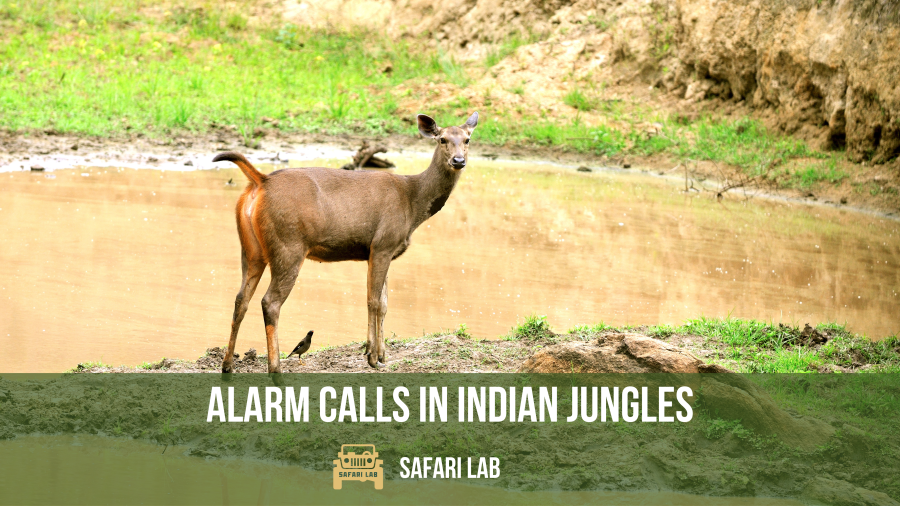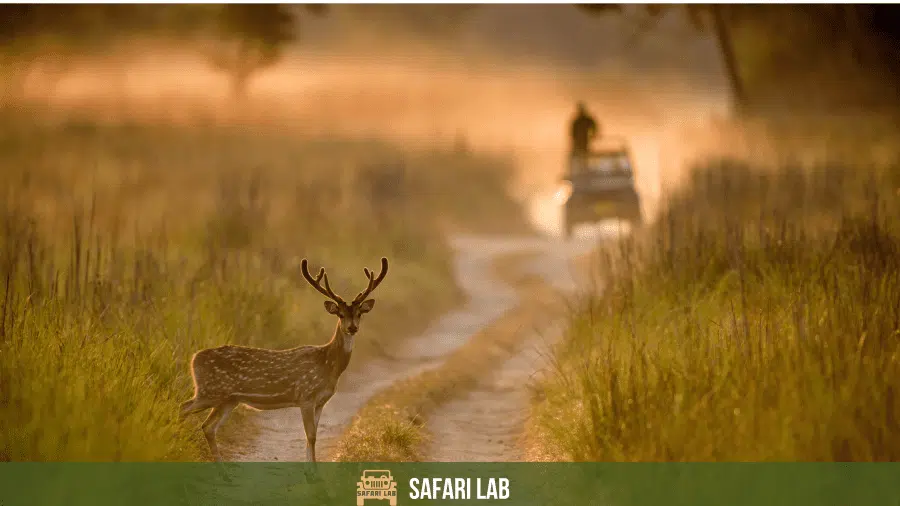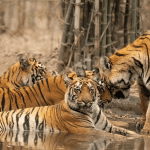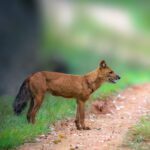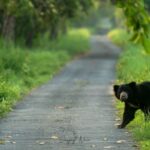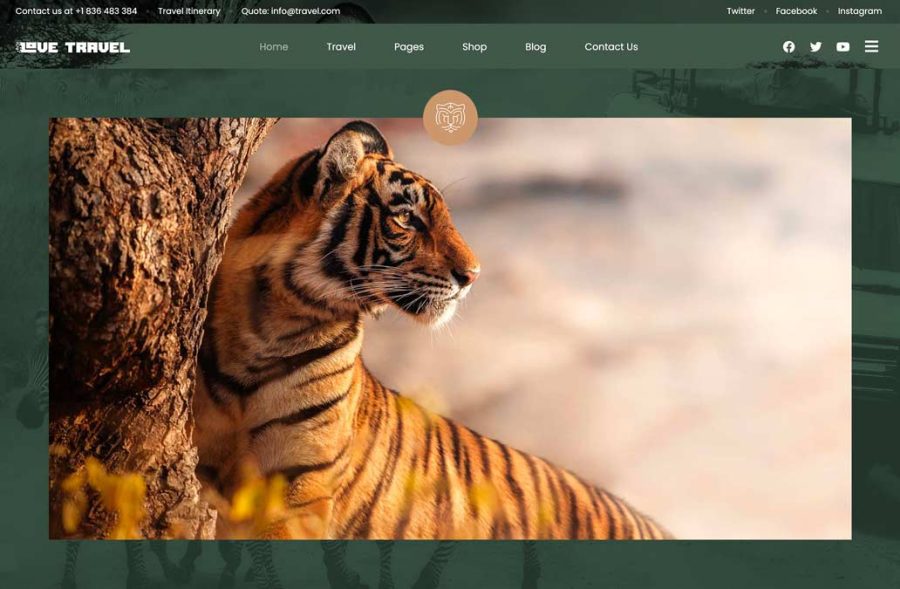Welcome to our guide on the fascinating world of alarm calls in Indian jungles. From the thrilling wildlife safaris to the wonders of Indian wildlife, we will take you on a journey through the secrets of animal communication through their alarm calls.
India is home to a diverse array of wildlife, including tigers, elephants, leopards, and many more. However, it’s not just these majestic animals that make Indian jungles so captivating. The bustling ecosystem also features an intricate network of communication through animal alarm calls.
Jump To
ToggleKey Takeaways:
- Alarm calls play a crucial role in Indian wildlife conservation efforts.
- India boasts a wide variety of animal species, each with their unique alarm calls.
- Wildlife photographers often use alarm calls to capture elusive moments in the Indian jungles.
- Human intervention, such as tourism and habitat disruption, can have an impact on animal communication through alarm calls.
- Research into animal alarm calls in Indian jungles is an ongoing endeavor, with new insights and discoveries being made constantly.
Understanding Animal Communication
Animal communication is a fascinating subject that reveals the intricacies and beauty of the natural world. In the Indian jungles, animals communicate through various sounds, some of which are musical, while others are harsh and alarming. The sounds of the jungle volleys from the rhythmic chirping of birds to the muted growls of tigers, revealing the diversity and complexity of animal communication.
Animal communication can take on different forms, including vocalizations, body language, and chemical scents. Each species has a unique set of communication strategies, tailored to their environment and social behavior.
In the Indian jungles, sounds play a crucial role in the communication of animals. Every species has its own set of sounds that convey meaning, signals, and warnings.
For example, langurs have a distinct alarm call that Leshen, a wildlife researcher, has been investigating. Her studies have revealed that langurs have different calls for different threats, allowing other animals to identify the type of predator posing a threat. Similarly, peacock calls have been found to vary according to their context, with mating calls being distinct from alarm calls.
The Sounds of Indian Jungle Animals
Animals in the Indian jungle use a variety of sounds to communicate. The following table showcases some notable jungle animals and their sounds.
| Animal | Sound |
|---|---|
| Spotted Deer | Bark-like Alarm Call |
| Peacock | Melodious Call |
| Sambar Deer | Loud, Deep Call |
| Langur | High-pitched Alarm Call |
| Rhesus Macaque | Sharp, Loud Barks |
Understanding animal communication is a crucial step towards wildlife conservation and jungle exploration. By learning and deciphering the sounds of the Indian jungle, researchers and nature enthusiasts can gain a deeper insight into animal behavior and interactions.
The Significance of Alarm Calls
Alarm calls are an essential aspect of wildlife conservation efforts and understanding the behavior of the Indian wildlife. Through deciphering these calls, researchers and enthusiasts can gain invaluable insights into animal interactions, predator-prey dynamics, and more. In fact, alarm calls have been used to study animal behavior for decades and have contributed to many conservation efforts.
For instance, by studying the alarm calls of the Indian swamp deer, also known as the barasingha, researchers have gained invaluable insights into their behavior. The swamp deer make “kabru” alarm calls to warn fellow herd members of approaching danger, which has helped researchers study the deer’s natural defense mechanisms.

Deciphering alarm calls provides a unique insight into the vibrant and diverse ecosystem of Indian wildlife, thereby contributing to conservation efforts and promoting responsible jungle exploration.
Notable Alarm Calls in Indian Jungles
The Indian jungles are home to a diverse range of species, each boasting unique alarm calls that serve different purposes. These calls not only alert others of potential danger but also convey messages about food and mating opportunities. Let’s take a closer look at some of the notable alarm calls of Indian wildlife:
| Spotted Deer Alarm Calls | Peacock Alarm Calls | Sambar Deer Alarm Calls |
|---|---|---|
| Bark-like calls that warn other deer of danger. These calls, coupled with their distinctive spotted coats, make them easier to spot in the dense jungles. | Peacocks, known for their stunning displays of feathers, also have a unique alarm call to alert others of approaching predators. Their “kow-kow-kow” call is distinguishable from other bird calls. | Distinctive grunts and snorts are used by sambar deer to alert others of danger or communicate with potential mates. These calls can be heard from long distances, echoing throughout the jungles. |
| Langur Alarm Calls | Rhesus Macaque Alarm Calls |
|---|---|
| The loud and piercing barks of langurs can be heard throughout the jungles. These calls warn others of potential predators, but they are also used to establish hierarchy within the group. | Rhesus macaques, known for their intelligence and playful behavior, also have distinct alarm calls. They use different calls for different levels of danger, making them one of the most communicative species in the Indian jungles. |
These alarm calls not only serve as a fascinating insight into animal communication but also aid researchers in studying animal behavior and interactions within the Indian jungles.
The Role of Alarm Calls in Wildlife Photography
Experienced wildlife photographers understand the importance of animal communication in capturing stunning shots in Indian jungles. Alarm calls, in particular, help photographers locate animals and capture their authentic behavior in their natural habitat, resulting in breathtaking shots that showcase the magic of Indian wildlife.
When listening for alarm calls, experienced wildlife photographers pay attention to the direction and intensity of the call, which helps them narrow down their search and identify the species making the sound. These calls are often a sign of danger or movement, indicating that an animal is on the move or a potential predator is in the vicinity, providing a thrilling experience for both the photographer and the animals.
The jungle adventure of wildlife photography becomes even more rewarding when using alarm calls to locate specific species, which can be challenging to find without these audio cues. These calls also help photographers frame their shots and anticipate animal behavior, ensuring they are in the right position for that perfect shot. It’s a thrilling and educational experience that connects individuals to the vastness of the Indian wildlife.
Conservation Efforts and Alarm Calls
Indian wildlife is home to many indigenous species such as the swamp deer, hog deer, and nilgai. These species have unique alarm calls that researchers and conservationists use to study their behavior and protect them from endangerment.
Wildlife conservation efforts rely heavily on the knowledge gained from animal communication through alarm calls. By recording and analyzing these calls, experts can identify areas with high biodiversity and establish protected reserves. In addition, alarm calls are instrumental in monitoring the health and movement of animal populations, identifying the presence of predators, and detecting any disturbance in their habitat.

The Barasingha, also known as the swamp deer, can be found in the Kanha National Park. Their alarm calls alert others of their family group about the potential danger and therefore serves as a protective mechanism. The Hog deer, on the other hand, have a unique alarm call which is completely different from the Barasingha. Their call is shrill and long which allows them to cover larger distances when warning others.
Moreover, the Nilgai alarm calls signal danger and protection. Typically, they reside outside protected areas and have an important role in guarding the ecosystem. Through alarm calls, they alert other animals and members of their group, which helps them in fleeing to safe places.
Studying alarm calls has become an important aspect of wildlife conservation efforts, providing researchers with key information to protect Indian wildlife and ensure that endangered species remain protected.
Impact of Human Intervention on Alarm Calls
While alarm calls play a crucial role in Indian wildlife communication, human intervention through tourism and habitat disruption may have adverse effects on these calls. The increasing number of tourists visiting wildlife habitats may result in excessive noise pollution and may disturb the natural habitat, interfering with alarm calls. Moreover, the construction of roads and buildings also disrupts animal communication in Indian jungles.
| Consequences | Importance of Responsible Wildlife Tourism |
|---|---|
| Disruption of Predator-Prey Dynamics: Alarm calls in Indian jungles help in monitoring predation and prey survival rates. Human intervention affects this balance, resulting in possibly negative consequences for the ecosystem. | Promotion of Habitat Restoration: Responsible wildlife tourism companies work towards conserving and restoring habitats, which positively impacts the animal ecosystem. |
| Lack of Breeding Opportunities: Human intervention can potentially affect the breeding of animals in Indian jungles, which may have negative impacts on their population numbers. | Development of Sustainable Tourism: The promotion of sustainable wildlife tourism ensures that wildlife populations thrive in their natural habitats, enabling visitors to enjoy the beauty of Indian wildlife without harming the ecosystem. |
It’s crucial to practice responsible wildlife tourism to protect Indian wildlife and the inimitable alarm calls that define it. By being mindful of our impact on the natural habitat, we can ensure that future generations have the opportunity to witness the marvels of Indian jungles.
Research and Future Directions
Indian wildlife is a subject of constant fascination and discovery. The study of animal communication, including alarm calls, plays a significant role in deepening our understanding of this ecosystem. Researchers are consistently exploring new avenues to better comprehend these calls and the behaviors of the animals that make them.
Recent investigations have shown that barasingha alarm calls and barking deer alarm calls, in particular, have unique patterns and structures, displaying a level of complexity that is yet to be fully understood. Future research will aim to unearth more insights into these fascinating calls, including their potential uses in conservation efforts and wildlife tourism.
As we continue to expand our knowledge of Indian wildlife, alarm calls will undoubtedly remain an integral part of research and exploration. By discovering new ways to decode these calls and interpret the messages relayed by animals, we can continue to work towards a better understanding and protection of this rich and diverse ecosystem.
Conclusion
The study of alarm calls in Indian jungles is a fascinating aspect of wildlife communication that continues to intrigue researchers and enthusiasts alike. These calls play a significant role in wildlife conservation efforts, aiding in our understanding of animal behavior and predator-prey dynamics. They also add to the overall experience of wildlife photography and jungle exploration, providing a glimpse into the diverse ecosystem of Indian wildlife.
As we continue to uncover new insights and research these calls in different species, it’s important to remember the impacts of human intervention on these natural communication methods. Responsible wildlife tourism and habitat preservation are crucial to maintaining the delicate balance of the Indian jungle’s vibrant ecosystem.
In conclusion, exploring the world of alarm calls in Indian jungles is a journey filled with wonder and discovery. As we strive to gain a deeper understanding of these calls, we contribute to the conservation of Indian wildlife and its unique ecosystem for generations to come.
FAQ
What are alarm calls in Indian jungles?
Alarm calls in Indian jungles are vocalizations made by animals to alert others in the vicinity of potential danger or the presence of a predator.
How do animals communicate through alarm calls?
Animals communicate through alarm calls by emitting distinct vocalizations that vary depending on the species. These calls can range from specific sounds to various patterns and frequencies.
What is the significance of alarm calls?
Alarm calls have great significance in wildlife conservation efforts and understanding the behavior of Indian wildlife. They provide insights into animal interactions, predator-prey dynamics, and contribute to the overall study of animal behavior.
Which animals make notable alarm calls in Indian jungles?
Notable alarm calls in Indian jungles include the bark-like calls of spotted deer, the melodious alarm calls of peacocks, the distinctive calls of sambar deer, the vocalizations of langurs and rhesus macaques, among others.
How do alarm calls aid in wildlife photography?
Alarm calls serve as indicators for wildlife photographers, helping them locate and capture elusive moments in the Indian jungles. These calls enhance the overall jungle adventure experience by enabling photographers to photograph wildlife subjects more effectively.
How do alarm calls contribute to wildlife conservation?
Alarm calls play a crucial role in wildlife conservation efforts as they help researchers and conservationists understand animal behavior, monitor populations, and implement effective conservation strategies. They are particularly important for safeguarding species such as swamp deer, hog deer, and nilgai in Indian jungles.
What is the impact of human intervention on alarm calls?
Human interventions in the form of tourism and habitat disruption can have adverse effects on alarm calls in Indian jungles. Excessive human presence and disturbance can alter the natural behavior of animals and disrupt their communication patterns.
What are the ongoing research and future directions in the study of alarm calls?
Ongoing research aims to uncover new insights into alarm calls in Indian jungles, including the specific calls of barasingha and barking deer. Future directions include further understanding of the communication dynamics and developing conservation strategies based on these alarm calls.
How does exploring alarm calls in Indian jungles contribute to our understanding of wildlife communication?
Exploring alarm calls in Indian jungles provides a captivating journey into the world of wildlife communication. It sheds light on the significance of these calls, the impact on photography and conservation, and offers a deeper understanding of the vibrant and diverse ecosystem of Indian wildlife.
Recent Posts
Archives
Categories
Customized Trip Form
Author

Sanjay Nair is a multi-award-winning wildlife photographer, conservation storyteller, and co-founder of Safari Lab. With over 15 years of fieldwork and a Nature in Focus award under his belt, Sanjay’s photographs and stories have been published in global outlets such as The Times & The Guardian.
View all posts

